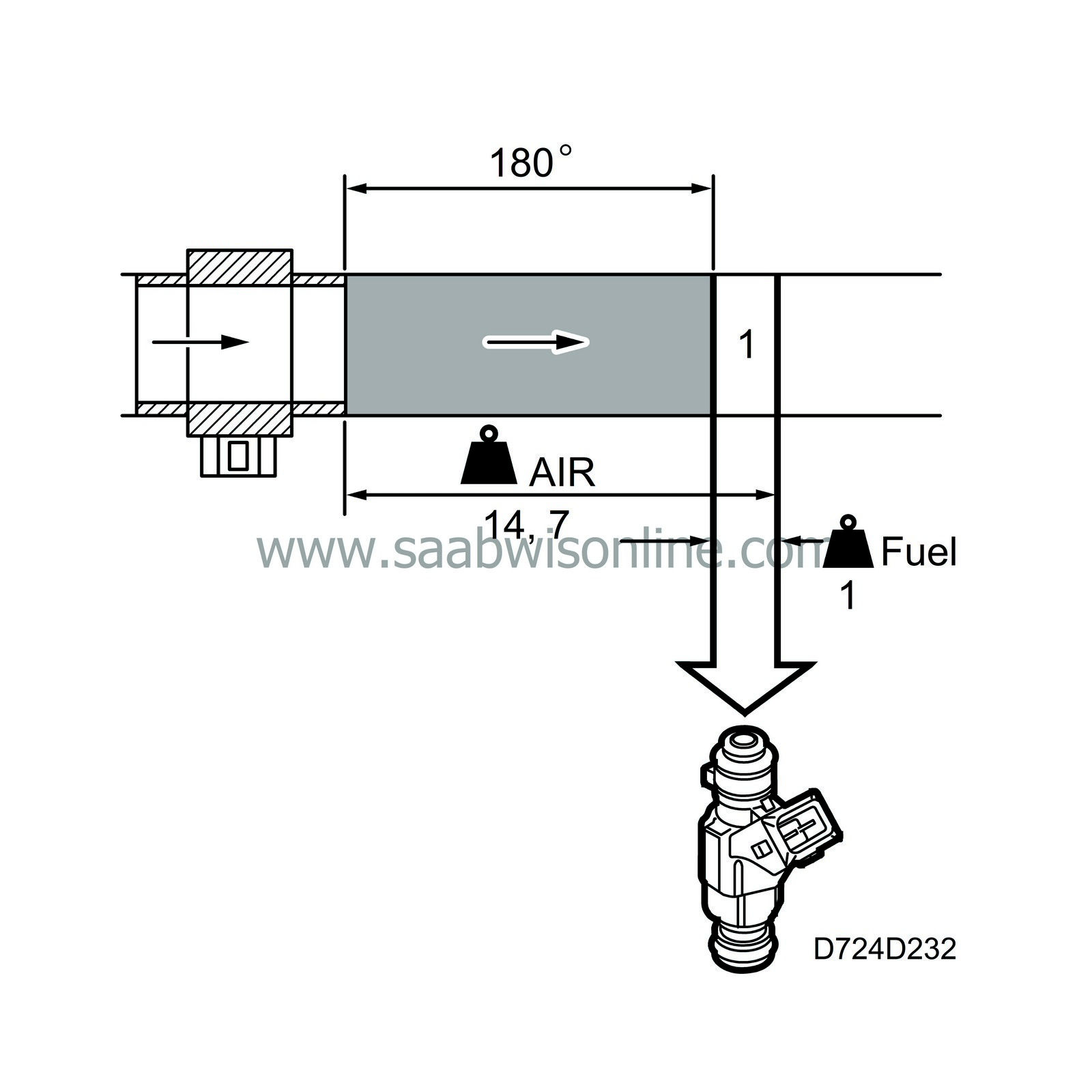PRE-RELEASE
Basic quantity, fuel
| Basic quantity, fuel |
Most interesting, however, is the air mass that is drawn in by each cylinder, as it is to this air the petrol is to be added. The control module registers the air mass drawn in during one engine revolution. As the engine is 4-cylinder 4-stroke, two cylinders must have drawn in air simultaneously during this engine revolution. The air mass passing the mass air flow sensor is divided by two so that the control module will be aware how much each cylinder has drawn in. The unit has now changed to milligrams air/combustion (mg/c).
To attain lambda 1, the fuel/air ratio must be 1 kg fuel to 14.7 kg air. Since we know the amount of air being drawn into each cylinder/combustion, the control module can easily calculate how much fuel to inject into the cylinders on each occasion. Milligrams air/combustion is divided by 14.7 and the result is the amount of petrol to be injected in mg/combustion.
The following text is an account of why the basic fuel quantity must sometimes be adjusted to a leaner, or most often, a slightly richer mixture so that the engine will run smoothly and emissions will be kept within required limits.



